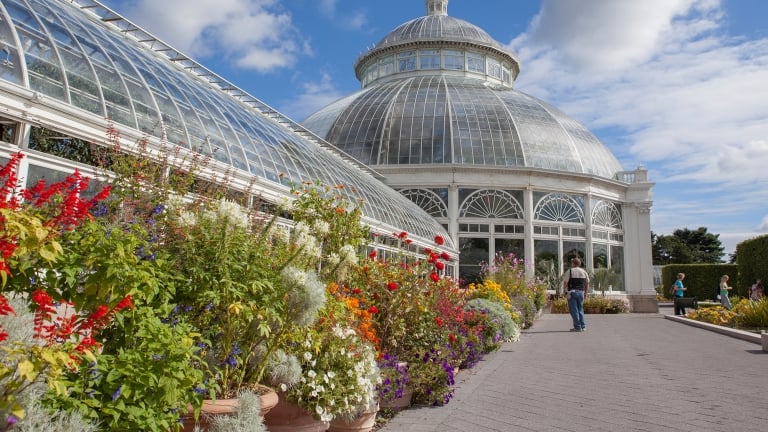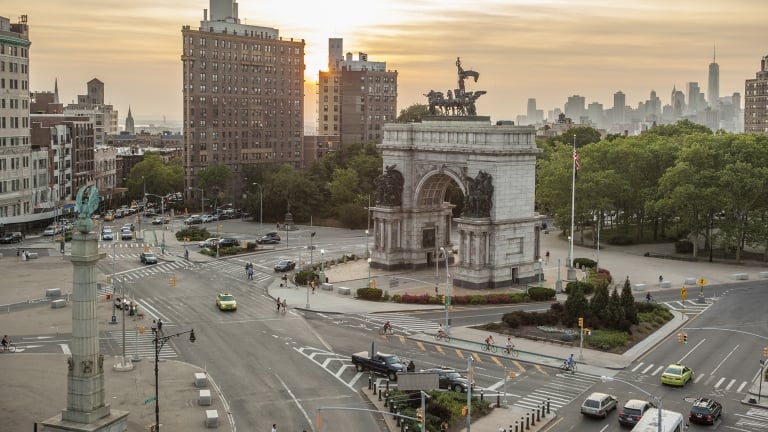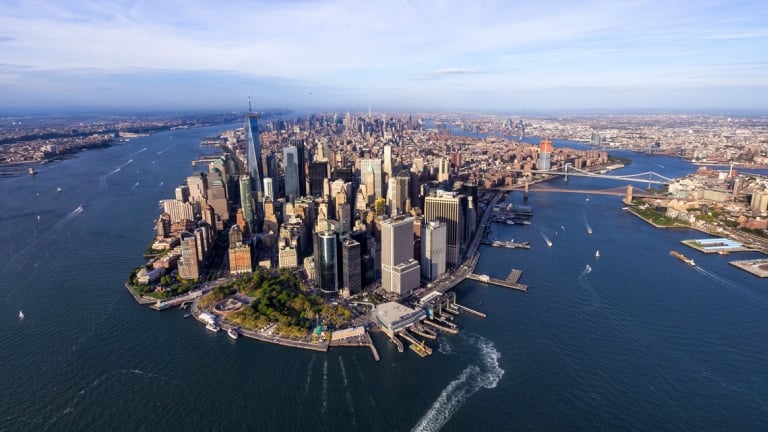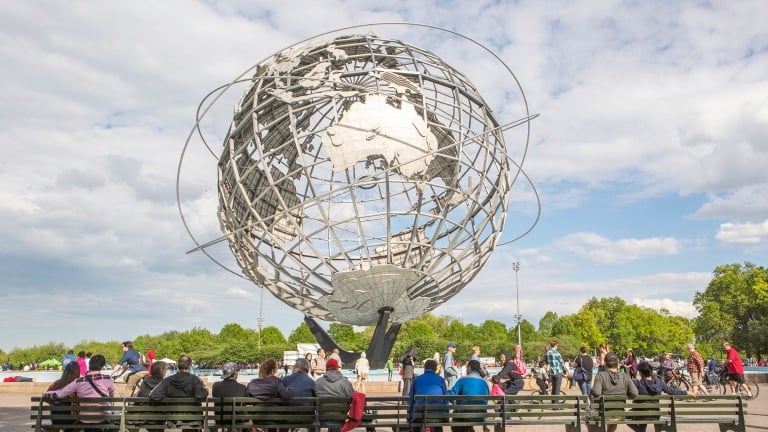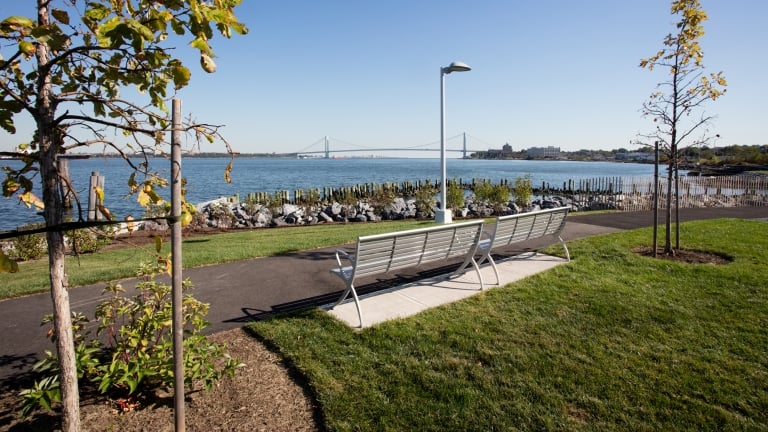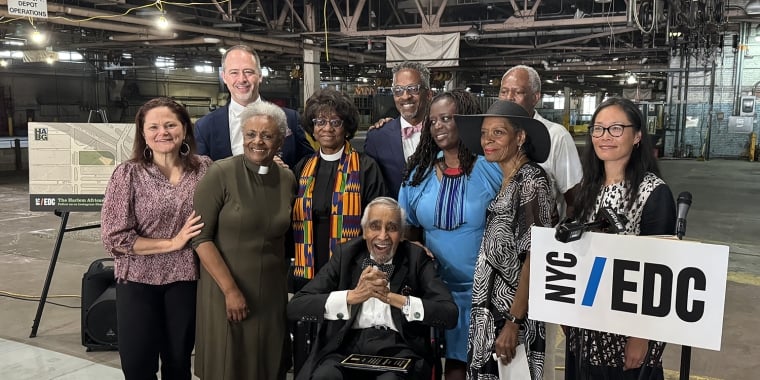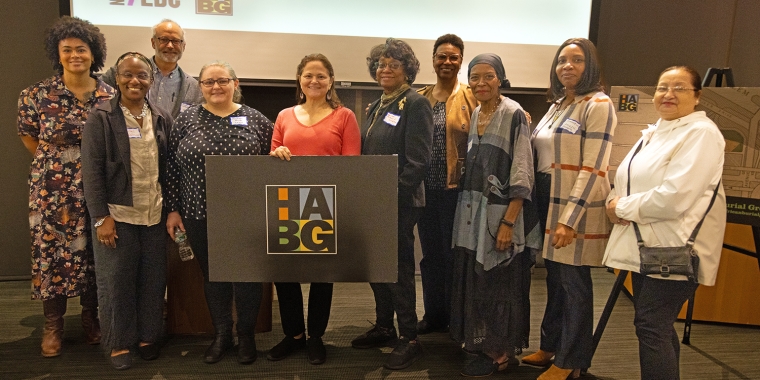
126th Street Harlem African Burial Ground Memorial and Mixed-Use Project
Honoring and memorializing the historic Harlem African Burial Ground with a new outdoor memorial and indoor cultural center and addressing affordable housing and jobs needs in the East Harlem community.
The History
The 126th Street Harlem African Burial Ground Memorial and Mixed-Use Project honors and memorializes an important part of the city's history and addresses needs of the East Harlem community. The 2.7-acre project site is a full Manhattan city block located at 126th Street and 2nd Avenue in East Harlem that is currently occupied by the MTA’s decommissioned 126th Street Bus Depot. The historic footprint of the Harlem African Burial Ground occupies 0.4 acres on the southeast portion of the site.
The village of Nieuw Haarlem was established by Dutch royal charter on August, 15 1660, and the Low Dutch Reformed Church (predecessor of today’s Elmendorf Reformed Church) was its founding place of worship. From the beginning, the church maintained two cemeteries: one for people of European descent, and another for people of African descent. For more than two centuries, New Yorkers of African descent were buried at the Harlem African Burial Ground. They played a crucial role in the early history of the city, and their history is New York City and Harlem’s history.
In the mid-1800s, prompted by the northward expansion of the city, the land the Harlem African Burial Ground sat on was sold. In the decades that followed, hills were leveled, parts of the Harlem River were filled in and multiple land transactions, redevelopments, and urbanization occurred on and around the site, all causing considerable displacement of the historic cemetery.
In the early 2000s, during the beginning construction stages of the nearby NYCDOT Willis Avenue Bridge Reconstruction project, a Phase 1A archaeological assessment for that project suggested that the historic Harlem African Burial Ground was located within the site’s boundaries. At the time, the site was actively used by the MTA as the 126th Street Bus Depot which covers the entire site’s footprint. The bus depot, originally built in 1947, currently stands on the site.
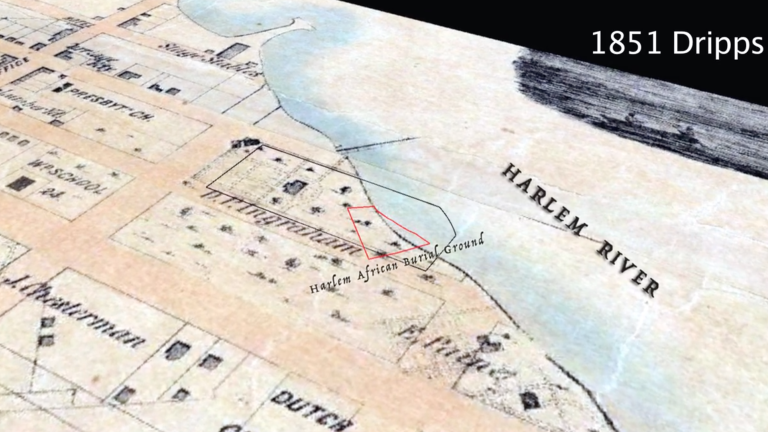
The Rediscovery
In 2009, a group of community members formed the Harlem African Burial Ground Task Force (HABGTF) to advocate for the creation of a memorial that would restore honor, dignity and respect to those buried at this sacred site. In 2011, Community Board 11 designated the HABGTF as the organization representing the interests of the historic cemetery. The HABGTF was, and its current successor, the Harlem African Burial Ground Initiative (HABGI), is co-chaired by Melissa Mark-Viverito, former councilmember for District 8 and City Council Speaker, and Rev. Dr. Patricia A Singletary, Pastor Emerita of the Elmendorf Reformed Church, the descendant church of the Harlem African Burial Ground.
In 2015, after the MTA decommissioned the bus depot, archaeologists were commissioned by NYCEDC to complete a Phase 1B archaeological investigation uncovered over 140 human bones or bone fragments of a minimum of two people, likely of African descent, on the site. These human remains were not situated in their original burial locations and were not within an identifiable burial shaft or grave, but were instead disarticulated, meaning they were separated from the other bones of the same body. This historic rediscovery physically reaffirmed the burial ground’s presence at this location.
The human remains were consecrated in a ceremony led by Rev. Dr. Patricia A. Singletary, and are stored in a safe and controlled environment at the Landmarks Preservation Commission’s NYC Archaeological Repository: The Nan A. Rothschild Research Center until they can later be reinterred within the future outdoor memorial.
In Summer 2019, NYCEDC and the HABGTF collaborated on a free exhibition at the La Marqueta public market in East Harlem showcasing the history of the Harlem African Burial Ground and the future project on the site. The opening featured a panel discussion moderated by Sharon Wilkins, Manhattan Deputy Borough Historian and HABGTF member.
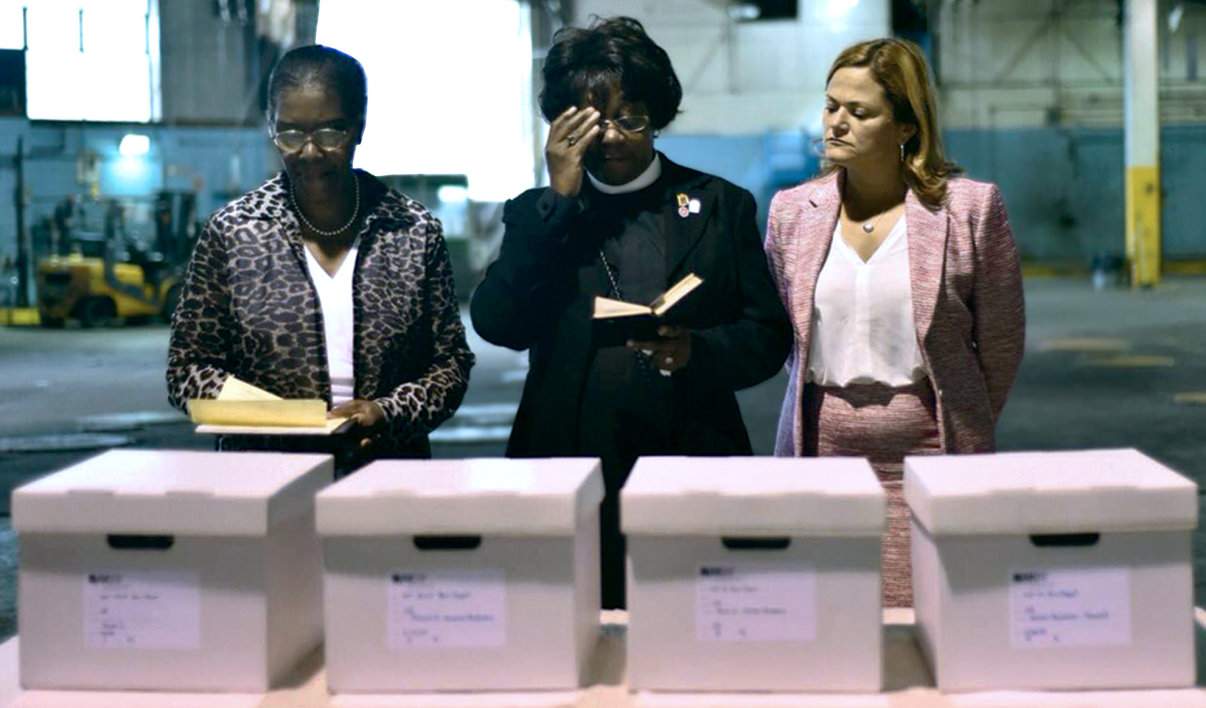
The human remains found at the site of the Harlem African Burial Ground were consecrated in a ceremony led by the HABGTF co-chairs Reverend Dr. Patricia A. Singletary (center), with co-chair and former New York City Council Speaker Melissa Mark-Viverito (right), and Task Force Member Sharon Wilkins (left).
The Vision
Beginning in 2015, NYCEDC worked in partnership with the HABGTF, elected officials, City agencies, and community organizations on a community-based planning process to develop a vision and goals for a future project at the site. In 2017, the project successfully completed the City’s Uniform Land Use Review Procedure (ULURP), and a Points of Agreement (“POA”) letter memorialized the project goals and program developed during the planning process.
This process determined that the future project at the site will include:
- A permanent, public outdoor memorial, to be located on the entire historical footprint of the Harlem African Burial Ground
- An indoor cultural education center dedicated to providing programming about the history and cultural impact and significance of the Harlem African Burial Ground
- Housing, a minimum of 80% of which would be income-restricted affordable homes
- Commercial and retail space
- Additional community facility space
- Streetscape and pedestrian connections to the surrounding neighborhood
- A plan to train and hire East Harlem residents for construction and permanent jobs at the new project
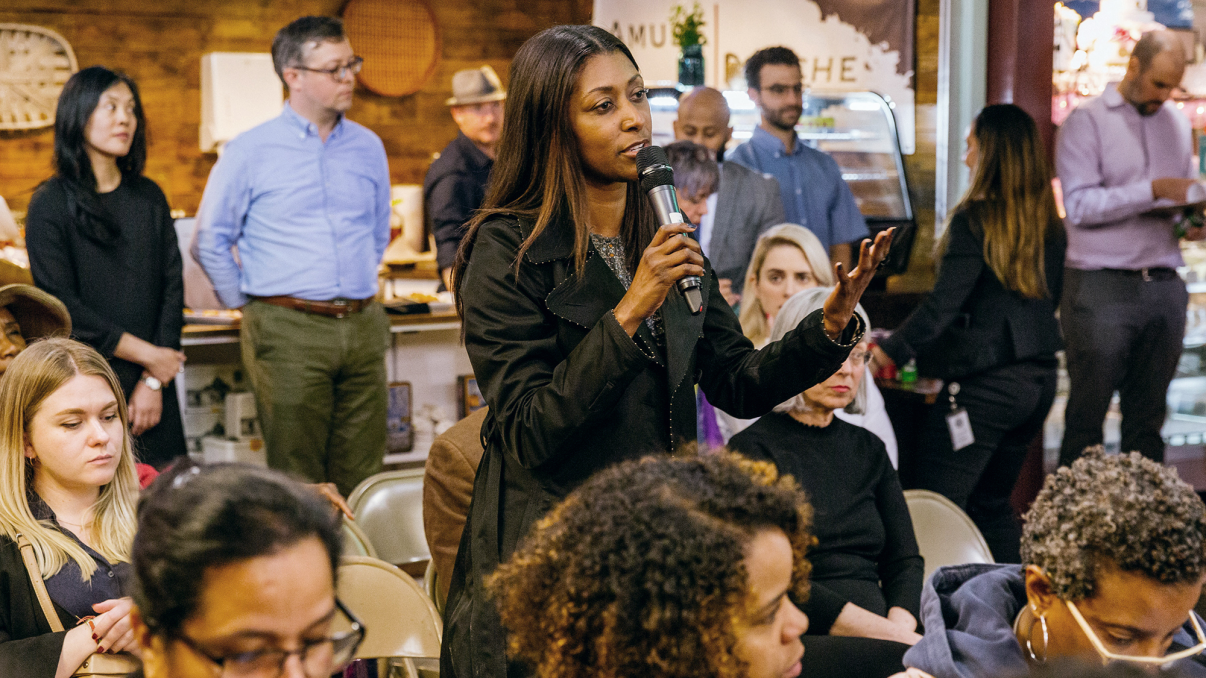
What’s Next
In June 2024, NYCEDC and the Harlem African Burial Ground Initiative broke ground on the next phase of archaeological fieldwork. Led by AKRF Inc., this work seeks to establish the complete distribution of human remains across the site, recover them in a safe and dignified way, and store them until they can be reinterred as part of the future permanent outdoor memorial. These steps will prepare the site for the development of a future mixed-use program.
Read the press release to learn more about how we recognized this important project milestone.
NYCEDC, in coordination with the HABGI and Bridge Philanthropic Consulting, has also begun a wide-reaching, multidisciplinary education and engagement effort to complement this important archaeological work and increase awareness and understanding of the Harlem African Burial Ground. Organized around the theme "History Beneath Our Feet: Unearthing Our Legacy," this engagement campaign offers a range of programming catered to all ages, with a particular focus on engaging residents of East and Central Harlem, and beyond.
Sign up for our newsletter to receive project updates and learn of our upcoming events.
-
Project Update for CB11 April 17, 2024
-
126th Street Harlem African Burial Ground Memorial and Mixed-Use Project FAQ February 22, 2024
-
Harlem African Burial Ground Town Hall Presentation September 18, 2023
-
Harlem African Burial Ground Brochure
-
Project Update for CB11, Land Use, Landmarks & Planning Committee June 14, 2023
-
La Marqueta Exhibition 2019
-
Points of Agreement (POA) Letter 2017
-
Phase 1B Archaeological Investigation 2016
-
Phase 1A Archaeological Assessment 2011
-
Past: E126th Street Info Session Boards Harlem African Burial Ground Task Force Vision & Mission Statements
-
Present & Future: E126th Street Info Session Boards Context map and more
Learn More
For questions or more information, please email the NYCEDC project team.
Sign up for project updates via our quarterly newsletter.
Follow us on Instagram.
